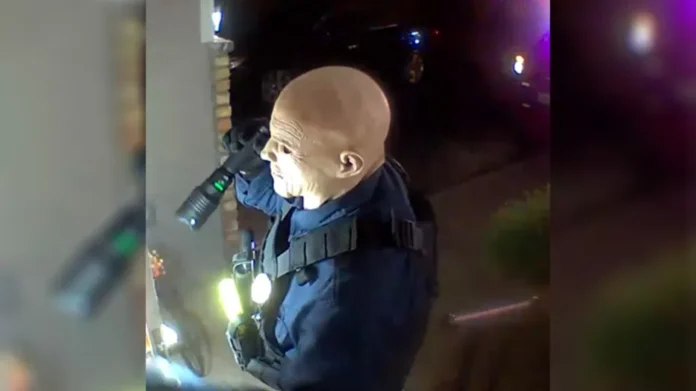The recent arrest and federal complaint against Vance Boelter have sent shockwaves across Minnesota and the nation. The FBI has released extensive Vance Boelter FBI details, revealing chilling evidence about how the 57-year-old suspect targeted multiple state lawmakers in a series of violent attacks. Boelter is now facing six federal charges—including stalking and murder—as well as state charges for first-degree murder and attempted murder in connection with the shootings of Minnesota state Representative Melissa Hortman and her husband, Mark, and the wounding of state Senator John Hoffman and his wife, Yvette.
This shocking case has gripped the public’s attention, not only for its brutality but also for the meticulous planning and political targeting involved. According to the latest FBI and law enforcement briefings, Boelter went to the homes of at least four lawmakers the night of the attacks, intent on killing them. His actions have been described by prosecutors as “the stuff of nightmares,” involving impersonation of a police officer, elaborate disguises, and premeditated surveillance of his victims.
The Night of the Attacks: A Timeline of Horror
On the night of June 15, 2025, Vance Boelter began his deadly spree at the home of state Senator John Hoffman and his wife in Champlin. Dressed in a realistic police-style uniform and mask, Boelter knocked on their door, falsely identifying himself as an officer. Once inside, he shot both Hoffman and his wife multiple times after they realized he was an imposter and tried to push him out. Miraculously, both survived, though they sustained severe injuries and remain hospitalized.
After leaving the Hoffmans’ home, Boelter reportedly drove to the residence of a state representative in Maple Grove. Fortunately, the lawmaker and her family were on vacation and not at home, sparing them from harm. From there, Boelter proceeded to the home of a state senator in New Hope. By this time, local police had been alerted to the earlier shootings and dispatched an officer to check on the senator’s safety. The officer arrived to find Boelter’s vehicle—mistaking it for another police car—parked outside. When she attempted to speak with Boelter, he stared ahead without responding and quickly left the scene before backup arrived.
Boelter’s final stop was the home of state Representative Melissa Hortman and her husband, Mark, in Brooklyn Park. Police officers, already aware of the unfolding crisis, arrived just as Boelter was approaching the house. A gunfight erupted, with officers exchanging fire with Boelter before he stormed inside. Tragically, both Melissa and Mark Hortman were killed in the attack. Boelter managed to escape the scene but was apprehended after a 36-hour manhunt near his home in Sibley County.
The Investigation: Stalking, Surveillance, and a “Hit List”
The FBI’s investigation into the Vance Boelter case revealed a disturbing pattern of stalking and surveillance. Authorities found notebooks in Boelter’s car and home containing detailed information on more than 45 elected officials, including family details, home addresses, and surveillance notes. One entry next to Melissa Hortman’s name read, “married Mark 2 children 11th term,” while another notation described her home as a “big house off golf course 2 ways in to watch from one spot.”
Boelter’s meticulous planning extended to online research, where he gathered information about his targets and their families, as well as conducting in-person surveillance over an extended period. His disguise as a police officer, complete with a badge, tactical vest, and police-style lights on his vehicle, was designed to gain access to his victims’ homes under false pretenses.
Prosecutors have described his actions as “political assassination,” noting that Boelter stalked his victims “like prey” before carrying out his attacks. The motivation for the attacks remains unclear, but officials have labeled the shootings as targeted political violence. Minnesota Governor Tim Walz echoed this sentiment, emphasizing the gravity of the threat to public officials and the need for increased security.
Charges and Court Proceedings
Vance Boelter’s legal troubles are mounting rapidly. He faces six federal charges, including stalking and murder, as well as state charges for the murders of the Hortmans and the attempted murders of the Hoffmans. During his initial court appearance, Boelter claimed he could not afford an attorney, stating that he had between $20,000 and $30,000 in savings, owned his home, and possessed seven vehicles. The judge appointed a federal defender to represent him, and his next hearing is scheduled for June 27.
The case has drawn national attention, highlighting the dangers faced by public officials and the lengths to which some individuals will go to target them. The FBI and local law enforcement continue to investigate whether Boelter acted alone or had accomplices, and whether additional names on his list could have been future targets.
Security and Public Reaction
The Vance Boelter FBI details have prompted widespread concern among lawmakers and the public. Many officials are reevaluating their personal security measures, and there are growing calls for increased protections for elected leaders. The bravery of law enforcement officers, particularly those who responded to the scene and confronted Boelter, has been widely praised. State Senator Ann Rest, whose home was targeted but who was spared thanks to police intervention, publicly thanked the New Hope Police Department for their quick action.
Conclusion and Call to Action
The Vance Boelter FBI details paint a chilling portrait of a man who meticulously planned and executed violent attacks against Minnesota lawmakers. The case underscores the importance of vigilance, robust law enforcement response, and ongoing support for the safety of public officials.
Stay informed about breaking developments in this case and consider supporting efforts to protect public servants in your community. Share this information to raise awareness and encourage dialogue about safety and security for those who serve the public.
